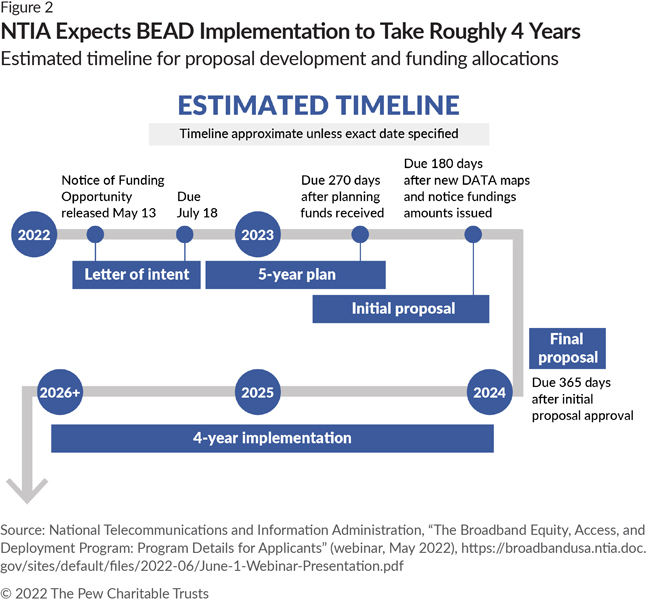BEAD funding to help Tennessee bridge gap in internet infrastructure

By KATE COIL
TML Communications Specialist
New federal funding opportunities are on the horizon to help fill donut holes in internet services as well as bring up speeds in underserved area.
The Broadband Equity, Access, and Deployment (BEAD) Program has already announced $42.45 billion in funding to be split amongst the U.S. states, territories, and Washington, D.C. Tennessee’s specific funding will be made available June 30, though Shapiro expects, based on the funding formula and past similar grants, for Tennessee to receive between $750 million and $950 million of the total pot of federal funding.
Paige Shapiro, the federal program officer for Tennessee with the U.S. Department of Commerce’s National Telecommunications and Information Administration (NTIA), said the funding is part of the federal Internet for All Initiative, which will provide a minimum speed of 100 downloads and 20 uploads, though the state of Tennessee could choose to make that threshold hire for the funds it is administering.
Internet service providers apply for grant through state office similar to funding in the past.

“Like most things with the federal government, this is coming at a pace at which we get the opportunity to plan for it,” Shapiro said. “The application for this funding is actually not yet available. We don’t know how Tennessee’s application is going to look since it hasn’t been approved, but you can go back and look at previous applications through the state broadband office to see the types of things they will be looking for. The application will probably be available by the end of this year or early next year because state’s have six months after the allocations are made to get their suite of application materials together and approved.”
There are still ways municipalities can help give their local service providers an edge in receiving grant funds.
“Municipalities can make sure they are talking with any internet service providers in their area about places that don’t have an internet option or have limited options,” Shapiro said. “The state broadband office in the past has focused on rural areas that didn’t have any internet options, trying to get that build out first. This funding can be used to close the rural gap, but it can also be used for anyone with less than a 120 speed. This is for that population who hasn’t been served in the past because they had basic DSL to do email or stream a video or call. This funding actually allows for anyone who is underserved to be eligible for BEAD funding.”
While previous funding has focused mostly on the most rural communities or areas without any service, Shapiro said the goal of this program is to help those who have the bare minimum service as well as more urban and suburban communities that have been left out of funding opportunities in the past.

“This isn’t about rural or urban but who is unserved and underserved. Any speed less than 25/3 is considered unserved,” Shapiro said. “The underserved population is those who have a little better than 25/3, DSL, or copper but less than that 120. If there is funding leftover, NTIA is hoping states will choose to serve anchor institutions like libraries, hospitals, schools, or anywhere the greater community could really benefit from having an internet service with gig speed.”
The way internet usage has changed, especially in the wake of the pandemic, means that affordable, high-speed internet connections are more valuable than ever. From video chatting with family members across the country or even the world to virtually attending local council meetings to academic achievement for students, internet service has become a vital part of how we live, work, and play.
“There are a lot of reasons why we want to close this gap,” Shapiro said. “It is truly making sure everyone has the tools to pursue the opportunities they want and live a meaningful, and fulling life. Broadband is just as important as electricity and water to live a fulfilling life. Telemedicine can really help close the rural gap and transportation gap, especially education, working from home, starting a business, doing a professional development and education so you can get a higher paying job and get certified to advance in your career. There is also a connection to the greater community. Some people aren’t able to go out due to barriers.”
Shapiro said there is other funding also on the horizon that can help bridge the internet gap. The goal of the Digital Equity Program is to ensure fiber connection to those who don’t have the digital skills or face barriers to setting up the internet or smart devices in their home. This grant will be aimed at non-profits or organizations like libraries.
The state of Tennessee will outline a digital opportunity plan to make sure stakeholders historically left out due to previous barriers learn what they need to be successful when they have high-quality internet to their home.
To learn more about the BEAD program, visit this link. For more about the Internet for All Initiative, visit this link.

